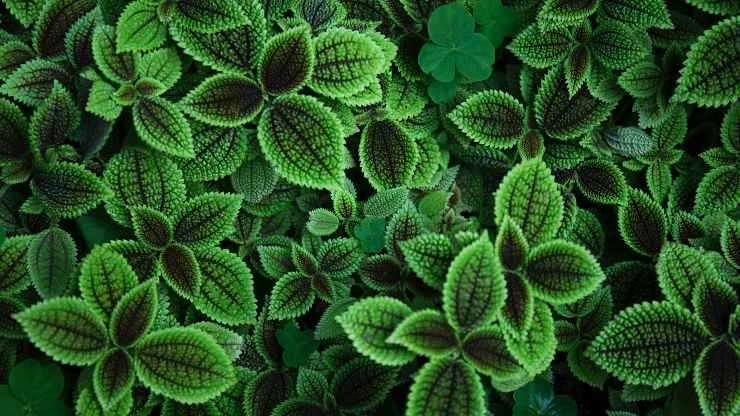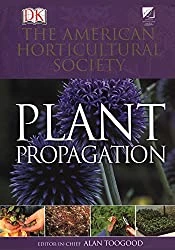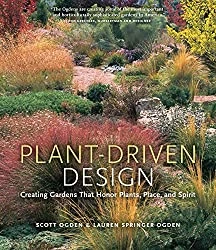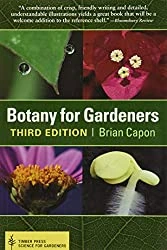Frequently Asked Questions: Gardening, Botany and Horticulture
Botany vs horticulture: What is the difference between botany and horticulture?
Because they both involve plant life, these terms are sometimes used interchangeably. However, botany and horticulture are quite different. Botany refers to the broad scientific study of all living plant organisms.
Horticulture is an applied science that is an extension of botany – it focuses on the art of cultivating both ornamental and edible plant life. Basically, botany is the science that studies plant life and horticulture is the art that makes plant life beautiful.
What is horticulture?
The word “horticulture” is derived from two Latin words, hortus and cultus, which is literally translated “garden culture.” Horticulture is both the science and art of producing, marketing, and using valuable and highly cultivated plants, flowers, fruits, and vegetables.
Understanding how plant life can be utilized for food, repairing, the environment, as well as adding to aesthetics all falls under the umbrella of horticulture.
Horticulture definition
Horticulture can be defined as the art of cultivating a garden.
What is botany?
Botany is a branch of scientific study in which plants themselves are examined. Botanical science includes structure, properties, physiology, and environmental impacts of all plant life. Botany examines all living plant organisms, from bacteria, to flowers, to trees.
Botanical research helps develop medicine, food, fibers, and building materials. Because plant life is essential to human life and civilization, botany helps us understand how to care for human life.
Botany definition
The definition of botany is essentially, the study of plant life. This includes plant physiology, properties, and biochemical processes.
How to get a horticulture certification?
Horticulture certification can be obtained from many colleges and universities. Some of them require a bachelor’s degree in horticulture or related scientific field first. Some free courses are available online for those who wish to pursue horticulture as a hobby that do not require college degree.
How to become a Certified Horticulture Professional?
To become a certified horticulture professional, first obtain a bachelor’s degree in horticulture, botany, or related scientific field. A GPA of 3.0 or higher may increase the chances of being accepted into an advanced program. Horticulture certification may include coursework on soil management, floriculture, and pomology.
Where can I find a list of horticulture degrees in the United States?
Several websites such as universities.com and bachelorsportal.com allow visitors to view details about horticulture degrees and the criteria by which they are ranked. Individual colleges can provide more specific information about their horticulture programs such as degree completion plans and graduation rates.
What is a typical horticulture salary one can expect as a professional?
The typical horticulture salary in the U.S. is $38,480. Factors such as location and specialized horticulture fields will affect the horticulturist’s salary (source: Glassdoor).
What does a horticulture consultant do?
A horticulture consultant is a specialized advisor who can identify and assess problems with horticulture and provide the appropriate advice to help remedy the issue. They can also be present in the planning stages of new horticulture developments. Horticulture consultants can service businesses, public gardens, parks, as well as individuals.
What kind of horticulture careers are out there?
There are a wide range of horticulture careers available for those who wish to lend their scientific and artistic skills to plant life.
Plant pathologists diagnose diseases that afflict plants, as well as develop treatment plans.
Nursery workers care for plants in nurseries as they grow from seedlings.
Ornamental horticulturists can be employed by landscaping firms or nurseries to create attractive arrangements with flowers and shrubbery.
Horticulture therapists incorporate gardening and plant life as therapeutic techniques to help patients with mental illness or trauma (this career also requires a license in therapy or psychiatry).
What is horticulture therapy?
Horticulture therapy is also called therapeutic horticulture. It occurs when an individual participates in gardening or caring for plant life facilitated by a licensed therapist to reach treatment goals.
Horticulturalist vs horticulturist: what is the difference?
What is the difference between a horticulturalist and a horticulturist? Very little. Both terms refer to the same profession. The word “hoticulturalist” is derived from an adjective and “horticulturist” is derived from a noun. They are used interchangeably as a matter of preference.
Most horticultural professionals use the title “horticulturist”, as most field titles are derived from nouns (i.e., “Botanist”, not “botanicalist”).
What are the most popular horticulture classes in higher education?
Some of the most common horticulture classes taken while pursuing higher education in the field will may include Botanical Identification, Landscaping Design and Accessories, Floral Arranging, Organic Farming, Crop Fertilization and Nutrition, and Botanical Pathology
What are the main branches of horticulture?
The main branches of horticulture include pomology, olericulture, floriculture, and fruit and vegetable preservation. Pomology cultivates fruit crops, olericulture cultivates vegetable crops, and floriculture cultivates landscaping and ornamental flowers. The branch of fruit and vegetable preservation is exactly what the title implies – the preserving both fruit and vegetable crops.
What is a horticulturist?
A horticulturist is an individual who applies the botanical knowledge to the art of plant production, plant preservation, gardening, and landscaping. Horticulturists may also conduct research in plant breeding, crop production, genetic engineering, biochemistry, or plant physiology. With the right knowledge and research, horticulturists can create new plant strains and invent new growing techniques.
What is the average botanist salary in the US?
The average botanist salary in the U.S. is estimated to be $65,949 in 2018 (source). Factors such as location and level of education or experience influence the range of botanists’ salaries.
How can someone get a botany degree?
To earn a botany degree, find a college that offers a B.S. in botany or plant science. Coursework usually includes plant genetics, plant structure, ecology, and agronomy.
What are the top 3 horticulture books?
Here are some great horticulture books available on Amazon.
American Horticultural Society Plant Propagation: The Fully Illustrated Plant-by-Plant Manual of Practical Techniques by Alan Toogood. This handbook is sponsored by the American Horticultural Society and features step-by-step instructions on how to propagate a plant.
Plant-Driven Design: Creating Gardens That Honor Plants, Place, and Spirit by Scott Ogdon takes a more spiritual approach to planning and landscaping gardens in a variety of climates.
Botany for Gardeners by Brian Capon has been a best-seller for 30 years. Complete with photos and a plant taxonomy appendix, this book provides an overview of the science behind plants in practical ways that benefit gardeners.
What is organic farming?
Organic farming is a gardening technique that does not use genetically modified (GM) seeds, synthetic fertilizers, or pesticides. It relies on natural techniques such as compost, natural fertilizer, and crop rotation to produce fruitful crops.
What is terrace farming?
Terrace farming refers to an agriculture technique where flat surfaces are cut into a sloped piece of land in a way that resembles stairs. It allows sloped and hill areas to be farmed effectively. It is a popular technique for rice fields in Asia, as well as the steep sloped Andes mountains in South America.
What is conventional farming?
Conventional farming is also called industrial agriculture. It uses synthetic fertilizers, herbicides, pesticides, and genetically modified organisms (GMO). It consists of concentrated animal feeding operations, heavy irrigation, and massive tilling. This type of farming produces high yields from large crops for large numbers of people. Conventional farming has been the primary farming method for food production in the U.S. since the 1940s and stands in stark contrast to organic farming methods.
What are the best botanical gardens in the world?
Botanical gardens feature large collections of native plant and flower species, as well as exotic plants, flowers, and trees from around the world. Some great botanical gardens to visit include the Adelaide Botanic Garden, the Gardens of Trauttmansdorff Castle, and the Exotic Garden of Monaco.
The Adelaide Botanic Garden is in South Australia and consists of three public gardens in the center of downtown Adelaide. It features a Mediterranean garden, a rose garden, and two wisteria arbors.
The Gardens of Trauttmansdorff Castle is in Merano, Italy on the grounds of a medieval castle. Its attractions include The Oleander Steps, sun gardens, and terrace gardens featuring many exotic plants and flowers.
The Exotic Garden of Monaco is located on a cliffside in the municipality of Monaco. The exotic gardens also feature a museum of prehistoric anthropology among its exotic plant life.
How efficient can a wheat farm be?
A wheat farm can be efficiently planted and harvested in about four months. Spring wheat is usually planted in March or April and harvested in July or August. Winter wheat can be planted in the fall when it will germinate and grow into young plants. It stays in the vegetative state until spring when it will resume growth and be harvested in the summer.
What are the benefits of garden therapy?
Garden therapy can help with cognitive rehabilitation such as language skills, task initiation, and memory. It helps physical rehabilitation by strengthening muscles, building endurance, and increasing coordination.
What are cereal crops?
Cereal crops refer to grain crops like wheat, corn, rice, barley, and sorghum. These crops are agronomic staples, as they are regularly consumed by the population in large quantities.
How is rice grown?
There are many types of rice seeds, such as long-grain rice, short-grain rice, and sweet rice. Rice seeds need to be soaked in water for 12 to 36 hours and then planted in soil that is consistently kept wet. In 3 to 4 months, the rice grains are harvested. The stalks are cut and dried for 2 weeks until they turn gold. Then, the rice grains can be removed from their hulls and are ready to cook and eat.
How does rice grow in the United States?
Rice is primarily grown in the U.S. states of Arkansas, Texas, Louisiana, Mississippi, and Missouri. Rice must be grown and harvested in heavily irrigated soil.
What is the annual US rice production?
U.S. rice production contributes to 85% of rice consumed by Americans. Over 10 million tons of rice production is predicted for 2018 (source).
Horticulture vs agriculture: what is the difference?
The difference between horticulture and agriculture is that horticulture typically deals with small-scale gardening and agriculture refers to large scale farming and land cultivation. Agriculture utilizes land cultivation and animal breeding to provide food, medicine, and fibers necessary to sustain life.
What is a green farm?
A green farm grows green, leafy vegetables and herbs indoors using a hydroponic set. It is growing in popularity in Europe and can be an excellent option for apartments or city dwellers. Green farm hydroponic sets help grow lettuce, microgreens, and basil by providing the exact amount of water and nutrients the plants need at the right time.
What is a biofarm?
A bio farm is another name for an organic farm. It employs all-natural gardening techniques and natural fertilizers.
Monoecious vs dioecious: What is the difference between monoecious and dioecious plants?
Monoecious plants have both female and male flowers in one flower or plant. They can also be called hermaphrodites. Some monecious plants include corn and wild rice.
Dioecious plants have either female or male flowers in an individual plant, but not both. Asparagus, dates, mulberry, persimmons, and spinach are dioecious plants.
What is subsistence farming and subsistence agriculture?
Subsistence farming – also called subsistence agriculture- refers to farmers who grow enough food to sustain themselves and their families. It is contrasted with commercial farming, where food is produced to market.
What is an example of subsistence farming?
Most Americans relied on subsistence farming to provide for their families before the Industrial Revolution. Now, the term could refer to households who grow a vegetable garden or farm animals to sustain themselves but do not farm to sell.
What are stapled crops?
A staple crop can be defined as a food or crop that is regularly consumed in large quantities. Staple crops grow staple foods. Staple crops in the U.S. include corn, wheat, soybean, rice, sorghum, and barley, among others.
What is crop rotation?
Crop rotation is a technique of rotating a planting order of a garden or field to avoid soil depletion and certain diseases and pestilence. The four main categories of legumes (beans and peas), root vegetables (carrots, potatoes, beets, etc.), leafy greens (spinach, cabbage, cauliflower), and fruit bearers (tomatoes, cucumber, squash, pumpkin) should rotate their way around the garden every four years to maintain a healthy crop.
Aztec crops: Are there any famous Aztec crops that still exist today?
The ancient Aztecs were impressive gardeners. Common Aztec crops consisted of tomatoes, peppers, corn, beans, and squash – all of which are staple crops in the U.S. today.
Mesopotamia crop: What kind of crops did they grow in Mesopotamia?
Ancient Mesopotamia crops consisted of wheat, grapes, melons, apples, eggplants, and onions. Mesopotamia’s farmland was incredibly fertile because of irrigation from the Tigris and Euphrates Rivers.
What was the original forbidden fruit?
The term “Forbidden Fruit” originates in the Old Testament book of Genesis. Eve, the first woman ever created, succumbed to the serpent’s temptation to eat the fruit off of the one forbidden tree in the Garden of Eden, called the Tree of the Knowledge of Good and Evil. Eating the forbidden fruit was disobedience to God that brought sin to humanity.
What is the famous forbidden fruit strain?
Today the term “forbidden fruit” also refers to the Forbidden Fruit cannabis strain which is marijuana with a strong fruity scent and taste.
The Forbidden Fruit cannabis strain is a genetic cross of the Cherry Pie and Tangy strains. Its medical benefits may include stress relief and pain management. It may also lessen depression symptoms and help with insomnia.
What are the top 30 words to describe flowers?
Flowers have been universally revered and admired in virtually every culture in history. Here are some of the most popular and lovely words to describe flowers:
- Abloom
- Airy
- Annual
- Aromatic
- Blossoming
- Botanical
- Complementary
- Dainty
- Dazzling
- Delightful
- Ephemeral
- Exquisite
- Flourishing
- Grandiose
- Herbaceous
- Idyllic
- Lush
- Lavish
- Mesmerizing
- Natural
- Pastel
- Polymorphous
- Ravishing
- Resplendent
- Sensational
- Sylvan
- Transcendent
- Verdurous
- Vibrant
- Whimsical
How and where can I find the scientific names of plants?
The Integrated Taxonomic Information System (IT IS) is an international database that contains the scientific names of plants. Botanical textbooks and the internet are also handy resources for looking up a scientific name for a certain plant.
Plant identification app: Is there a mobile app that helps with house plant identification?
Several plant identification apps exist to help gardening enthusiasts identify certain plants and flowers.
The Flower Checker app was developed by botanists and is both reliable and easy-to-use.
The Plant Snapp is an app that makes it easy to snap and upload a photo to identify its name. This app is only available on Apple devices.
LeafSnap is available in the App Store and is also very user-friendly. Botanists at Columbia University and the Smithsonian partnered to give LeafSnap an accurate resource for plant identification.
Also, the NatureGate app has a database of 700 species and is available for Android and in the App Store.
What is the best way to identify flowers and their names?
The best way to identify flowers and their names would be by consulting a botanical encyclopedia, textbook, or a plethora of websites. Perhaps the easiest way is by using a plant identification app that provides the flower names for uploaded photos from a mobile device.
What are the most popular common flower names for children in the US?
Different flower names have been popular in different decades, but the most common flower names for today include Lily, Daisy, Rose, Dahlia, Marigold, and Iris for girls. Asher, Alder, and Sylvan are more common boy names inspired by flowers or plants.
Where can I find the most complete flowers name list?
Botanical encyclopedias are good resources for flowers name lists. Also, websites such as All My Favorite Flower Names provide comprehensive lists of flower names along with a photo to help with flower identification.
Where and how can I find Latin flower names?
Botanical textbooks will provide Latin flower names, as will several mobile apps and websites. Zaplana.net is a handy website that lists a flower’s Latin name, English name, and botanical family for reference.
Are there any botanical baby names?
Plant-inspired baby names have been around for centuries. While some of them have waned in and out of style, other botanical names are resurfacing as trendy, and others as unusual.
Some of the most unique botanical baby names for girls are:
- Aspen
- Azalea
- Bluebell
- Dahlia
- Daisy
- Evanthe
- Fleur
- Freesia
- Iris
- Jonquil
- Liliane
- Lotus
- Petal
- Rosa
- Sage
- Violet
- Zinnia
Some of the most unique botanically inspired baby names for boys include:
- Alder
- Ash
- Florin
- Linden/Lynden
- Reed
- Rowan
- Valerian




